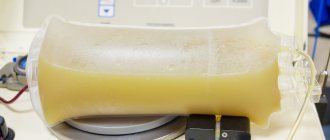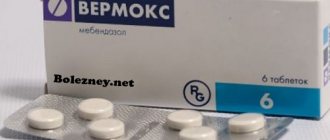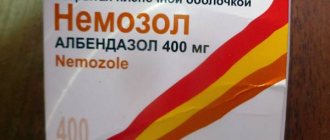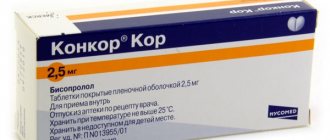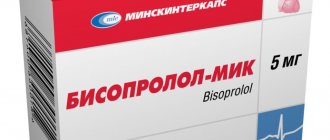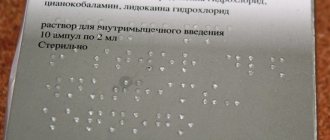Hemodialysis is a unique way of evacuating toxic substances from the bloodstream, the accumulation of which occurs due to the filtration inability of the kidneys. The first procedure was performed back in 1960, and since then it has made it possible to completely replace the functions of a human internal organ. Many patients who are indicated for hemodialysis do not even know what it is, and yet, for some, it is as necessary as air. The essence of the procedure is to urgently cleanse the body, restore water-salt, acid-base balance in order to improve human life. At a later stage, the procedure helps relieve symptoms of intoxication.
Types of kidney dialysis
Dialysis is a procedure for artificially purifying the blood of harmful elements in case of impaired kidney function. Today, its relevance has increased significantly. It should be understood that such a measure does not promote healing and does not help eliminate inflammatory processes, but only serves as a filter organ, relieving a person of toxic decay products. In ICD-10, dialysis is coded Z49. In modern medicine, several methods of blood purification are used.
Peritoneal dialysis. A method based on the filtration ability of the peritoneum, the thin shell of which plays the role of a semi-permeable membrane. It is prescribed if the patient does not have the opportunity to undergo the procedure in a specialized center due to the absence of the latter, or if there are serious contraindications to standard manipulation. This blood purification can be done at home. The dialysis solution is poured directly into the abdominal cavity through a catheter.
Hemodialysis. The blood is purified using a special device - a hemodialyzer, which is connected to the vessels through a set of tubes, semi-permeable membranes involved in the filtration process.
| Types of dialysis | Periodicity | Advantage |
| Peritoneal | Every 6 hours | No risk of bleeding No strain on the heart |
| Hemodialysis | 3-4 times a week | Short procedure duration |
Advances in clinical medicine make it possible to carry out the procedure (regardless of its type) at home, providing maximum comfort to the patient.
Complications
Complications during hemodialysis are rare, most often associated with malfunction of the equipment. This can lead to the development of an air embolism, which, unfortunately, ends in death.
In addition, the patient may experience the following symptoms:
- vomit;
- nausea;
- convulsions;
- increase or decrease in pressure.
Complications may arise from the vascular system. The fact is that the catheter can provoke the formation of a blood clot.
An infection may also develop, which will require additional treatment. In very rare cases, an allergic reaction may develop. To eliminate these consequences, the selected solution is adjusted or replaced.
Features of hemodialysis and purpose of appointment
The main purpose of the hemodialysis procedure is to filter the blood. With the help of special devices, the biological environment is cleansed from harmful substances:
- creatinine and urea;
- medicines, toxins and poisons;
- excess water, alcohol and electrolytes.
Today, the procedure can be performed mainly in a hospital, less often at home.
The essence of the procedure
Access to the natural hemodynamic environment is provided through an arteriovenous fistula; filtration is carried out in a multilayer osmotic membrane, which allows vital blood components to pass through and retains harmful waste compounds. The flow rate is controlled by a precision pumping station equipped with electronic gauge control.
First, venous blood is collected and fed into a filtration system with a semi-permeable membrane. It has pores of different diameters, separating the blood and the cleaning solution. Excess fluid and harmful substances pass into the dialysate. At the same time, special sensors monitor arterial and venous pressure.
The device provides for the supply of Heparin to the blood, which dissolves blood clots while simultaneously preventing the formation of new ones. It also has an anti-inflammatory effect and helps improve renal blood flow.
It is important to know! The frequency, intensity and duration of the procedure are prescribed on a strictly individual basis. 3-4 sessions per week are considered optimal.
Indications and contraindications
Programmed hemodialysis of the kidneys, in which indications and contraindications depend on many factors, is not prescribed for any disorders of renal function, but only when there is no other way to cleanse the blood of toxins and poisons. The reason for carrying out this particular type of procedure is the data of urine and blood tests:
- urea in the blood reaches 35 mmol/l;
- plasma creatinine level is 1 mmol/l or higher;
- bicarbonate content – 20 mmol/l;
- the amount of potassium is more than 6 mmol/l;
- oliguria – daily urine volume does not exceed 450 ml;
- the kidney performs its functions no more than 11-16%;
- GFR does not exceed 200 ml/sec.
If hemodialysis is necessary, there are instructions in which cases it is performed. The doctor decides to connect the patient to the device if a number of the following pathologies are present:
- Acute renal failure - acute renal failure.
- Overdose of drugs: sleeping pills, sedatives, antibiotics, sulfonamides, antitumor drugs.
- Intoxication with poisons – toadstool, arsenic.
- Alcohol poisoning – ethylene glycol, methyl alcohol.
- Overhydration, leading to swelling of the heart, lungs, brain, joints.
- Electrolyte imbalance in case of dehydration, peritonitis, fever, intestinal obstruction, burns, cystic fibrosis.
- Poisoning with narcotic substances - heroin, morphine.
- Chronic renal failure and CKD.
But not every patient can undergo blood purification using hemodialysis. There are a number of clearly defined contraindications and restrictions.
- Diseases of infectious origin, which are more serious in terms of threat level than chronic renal failure.
- Pre-stroke condition, hemorrhage in the membranes of the brain, as well as the early period after it.
- Psycho-emotional imbalance, severe mental disorders - schizophrenia, psychopathy, epilepsy, MDP.
- Mental retardation, dementia, reduced intelligence.
- Hyperbilirubinemia.
- Arterial hypertension, which can lead to a stroke right during the procedure.
- Blood diseases - leukemia, aplastic anemia. The likelihood of cell destruction and bleeding increases.
- Malignant tumor processes. The risk of cancer cells spreading through the bloodstream increases.
It is important to know! Another reason prohibiting the use of hemodialysis is physiological transformations in the body due to the patient’s age of 85 years and older. If you have diabetes, this threshold is reduced to 70 years.
Design and principle of operation of a blood purification device
Blood purification is performed using a special device called an “artificial kidney.” The design of the device may be different, but the principle of operation remains the same - removal of harmful substances by diffusion and convection. The kit includes the following items:
- a system that supplies blood and regulates its progress during purification;
- a dialyzer in which a double-sided filter is located;
- container for cleaning solution;
- a screen on which the entire process is displayed and controlled.
The operating principle of the device is quite simple. Blood from the vein enters the device through special tubes. The device is simultaneously supplied with a solution that passes through the filter on one side and blood on the other. The biological fluid is returned back to the vascular system, and the spent composition with toxic waste is removed.
Fistula formation
To prepare a patient for chronic hemodialysis, it is necessary to form an arteriovenous fistula - an opening that provides free access to the vessels through which the required amount of blood can be infused and removed. It is created through surgery on the wrist or elbow. The procedure takes place in several stages.
- Local anesthesia is performed (less commonly, general anesthesia).
- The area is treated with antiseptic agents.
- Using an incision, the artery is exposed, a ligation is made, and then excision is performed.
- A lateral vein is brought out and clamps are applied to it.
- Both types of vessels are dissected, after which they are sutured together.
- The wound is sutured and a sterile dressing is applied to the area.
Installation of a fistula takes less than an hour, and if the manipulation is performed correctly, the operated area heals quickly.
Algorithm for artificial filtration in a hospital
Hemodialysis is carried out in specialized centers or departments where there is an artificial kidney apparatus. Currently, the BAXTER-1550, FREZENIUS 4008S, NIPRO AURDIAL, and Fresenius installations are used. Patients are delivered by ambulance, transferred from other hospitals, or come independently for a planned procedure according to an individual program.
Preparatory stage
The preliminary stage includes the following activities.
- Conducting a preventive conversation, explaining the essence of the procedure.
- A week before the procedure, an arteriovenous fistula is formed.
- As an alternative to a fistula, prostheses made of synthetic materials are implanted under the skin.
- Before the session, it is necessary to measure temperature, blood pressure, and pulse.
During the procedure, before it begins and after its completion, indicators of the body’s condition are monitored.
Description of the procedure
Hemodialysis is performed in the following sequence.
- The patient is positioned in a reclining chair, with a device nearby.
- To communicate with the body, the doctor connects a venous or arteriovenous line.
- When the pump is turned on, a certain pressure is established, which affects the rate of blood flow.
- The actual cleansing process is carried out.
- Hemodynamic fluid returns to the bloodstream.
- A bandage is applied to the site where the needle was inserted, and the fistula is closed until the next procedure.
In some cases, in order to prevent infection, antibacterial tablets are prescribed, and hemostatic (hemostatic) drugs are also used.
Carrying out hemodialysis at home
Special equipment helps replace the natural filter and purify the blood at home. It has compact dimensions and a clear interface, which allows you to easily operate the device even for an ordinary person, not a specialist.
The procedure can be carried out every day, its duration is 2-4 hours. The advantage is convenience, safety, no need to visit a medical facility and no risk of hepatitis B infection.
In European countries and the USA, this option is considered an effective alternative to outpatient treatment and is widespread. The only disadvantage is the high cost of the dialyzer and there is a short training requirement. In this case, “Guide to Dialysis” by J. Daugirdas is suitable.
Complications
It is no secret that the development of renal failure often leads to disruptions in the functioning of other organs and systems.
Therefore, after hemodialysis, various side effects and complications may occur in the form of the following conditions:
- drop or increase in blood pressure;
- anemia due to a decrease in the level of red blood cells;
- nausea and vomiting associated with gastrointestinal dysfunction;
- muscle cramps caused by excessive fluid intake;
- neurological disorders;
- hyperkalemia and pericarditis;
- biocompatibility reactions.
In addition to the above, complications such as arrhythmia, disequilibrium syndrome, pulmonary and cerebral edema are possible. In this case, the patient is sent to the intensive care unit and his condition is continuously monitored.
Diet for dialysis patients
Nutritional therapy is of great importance in maintaining the results of hemodialysis. In this case, failure to comply with its principles negates all the efforts of doctors and aggravates the patient’s condition. The diet is compiled individually in each specific situation, but its basis is considered to be dietary table No. 7, namely its varieties - 7A and 7B. Its peculiarity is the exclusion from the usual diet of foods that can increase the rate of endotoxin production.
The basic principles of therapeutic nutrition are:
- control of calcium and phosphorus levels;
- reducing the amount of table salt;
- replacing animal protein with a plant analogue, reducing overall consumption;
- limiting foods rich in potassium: dried fruits, nuts, bananas, chocolate;
- exclusion from the diet of foods that retain fluid: pickles, smoked meats, coffee.
The menu should include lean meat, fish, vegetables, fruits, lean soups, and a little vegetable oil and butter. It is necessary to strictly monitor the amount of fluid consumed to prevent the appearance of edema.
The calorie content of the diet should be at least 40 kcal/kg of the patient’s weight. The optimal methods of culinary processing are boiling and steaming.
Operating principle of the device
The artificial kidney device receives blood directly from a vein. In structure, it consists of a special filter, which is a semi-permeable membrane with small pores. On one side, blood flows, and on the other, a special solution called dialysate is localized.
The hemodialysis procedure involves drawing out harmful components that accumulate in the blood. Excess water is also sucked out.
The selection of dialysate solution is carried out individually for each patient. Thanks to the latest upgrades, the device is able to independently create the necessary dialysate based on the entered indicators.
Main functions of hemodialysis:
- Since renal failure is characterized by an increased concentration of urea, toxins and other metabolic products, there is an urgent need for their removal. Thanks to diffusion, all unnecessary components are drawn out from the liquid, which has a higher concentration. This process leads to cleansing of the bloodstream.
- To avoid the removal of important substances, the prepared solution contains not only sodium, potassium, magnesium, chlorine ions, but also potassium. Their content is equal to the concentration that is in human blood. That is why during the cleansing process the level of electrolytes is normalized.
- The content of a special buffer - sodium bicarbonate, allows you to maintain a stable acid-base balance.
- Since with chronic renal failure there is an accumulation of excess fluid, which causes swelling of the lungs, joints, brain and heart, it is very important to remove it. This is where ultrafiltration helps.
- The administration of heparin helps the patient avoid the formation of blood clots, which occurs quite often in people with impaired kidney function.
- To prevent air bubbles from entering the bloodstream and preventing the development of an air embolism, a special air trap is located on the tube.
Cost of hemodialysis
The procedure is considered relatively expensive. Those wishing to undergo chronic hemodialysis should be aware that the cost varies in different clinics and countries. The total amount is made up of several factors:
- patient's severity;
- presence of concomitant diseases;
- level of respectability of the medical institution.
In private clinics, the expense item includes:
- care services provided by staff;
- payment for the ward;
- additional expenses.
The amount indicated in the price list is paid in a lump sum upon admission to the medical center at the time of conclusion of the contract. It must match the one named by the doctor providing the consultation.
| Country where hemodialysis is performed | Total cost of the procedure and stay in the clinic |
| Russia | Moscow – 97,650 rubles; St. Petersburg – from 14,500 rubles; Rostov-on-Don – from 13,000 rubles. |
| Israel | “Assuta”, “Hadassah” - from 300 dollars. |
| Germany | – from 200 euros. |
| USA | New York - 250-300 dollars. |
But situations often arise when the procedure can be performed free of charge. Only in this case we are not talking about treatment abroad or private clinics. Patients in critical condition undergo urgent hemodiafiltration.
Indications for use [edit | edit code ]
It is used when it is necessary to cleanse the blood of substances that are harmful to the body in the following pathological conditions:
- Acute renal failure;
- Chronic renal failure;
- Poisoning with poisons and drugs (able to pass through the hemodialysis membrane);
- Severe disturbances in the electrolyte composition of the blood;
- Alcohol poisoning;
- Overhydration, life-threatening (pulmonary edema, cerebral edema, etc.), not relieved by conservative therapy. Isolated ultrafiltration is most often used.
Quality of life and prognosis
If you have doubts about the benefits of hemodialysis, it is worth considering how long people live agreeing to an unpleasant procedure. According to statistics, extracorporeal blood purification increases life expectancy by 15-20 years. Important conditions: sessions cannot be postponed until the next day or skipped; It is forbidden to stop taking prescribed medications on your own and break your diet.
If you do not transplant the affected organ, but regularly use the “artificial kidney” device, you can live another 20 years, but then you will have to “sit” on the procedure for life. In this case, the patient dies not from kidney failure, but from inflammatory or infectious diseases and their consequences. This is due to a severe weakening of the immune system, against the background of which any pathogen can cause irreparable harm to health and life.
Why does kidney failure occur?
If you think about it, the word “failure” itself tells us that the kidneys are simply not coping with their responsibilities. The reason for this problem lies in the destruction of kidney tissue. As a result, metabolic products are poorly removed from the patient's body, which inevitably leads to intoxication.
Kidney failure can be caused by a number of diseases. Here are just a few of them:
- bad heredity
- congenital diseases
- primary kidney diseases (pyelonephritis, glomerulonephritis, etc.)
- diseases of the endocrine system, such as diabetes
- arterial hypertension
- various urological diseases
- toxic kidney damage
It is important to remember that the kidneys are a vascular organ. And any disease that affects blood vessels will eventually have a negative impact on the kidneys!
Transplantation as an alternative to dialysis
In various countries, annually 60-100 patients per 1 million population require renal replacement therapy (RRT) due to the development of end-stage chronic failure of the filtering organ. Until recently, this sounded like a death sentence. Today medicine offers three main methods of maintaining the lives of people with this diagnosis. The first two involve extrarenal blood purification - peritoneal or hemodialysis. The third is considered the most acceptable, since it involves transplanting a healthy organ from a donor.
It is important to know! Despite constantly improving medical technology, chronic hemodialysis has many negative side effects and circumstances that worsen the patient’s well-being. Therefore, it can be considered as an intermediate therapy.
Patients with a transplanted organ (if rejection does not occur) can live as before, and their quality of life is much higher. Despite the fact that from an economic point of view this method is considered unprofitable due to its high cost, it is an option of choice for end-stage chronic renal failure.
Contraindications
The relative ones include:
- mild tuberculosis
- diseases fraught with massive bleeding (these include: peptic ulcer, uterine fibroma, Melory-Weiss syndrome and others)
To absolute:
- mental illness (epileptic seizures, psychosis, schizophrenia, etc.)
- incurable forms of malignant tumors
- leukemia
- anemia
- severe forms of nervous system diseases
- patients with diabetes mellitus over 70 years of age
- old age (over 80 years old)
- the presence of two or more serious pathologies, which include: myocardial infarction, heart failure, advanced atherosclerosis, lung disease, liver cirrhosis, etc.
- alcoholism, drug addiction without further social rehabilitation
